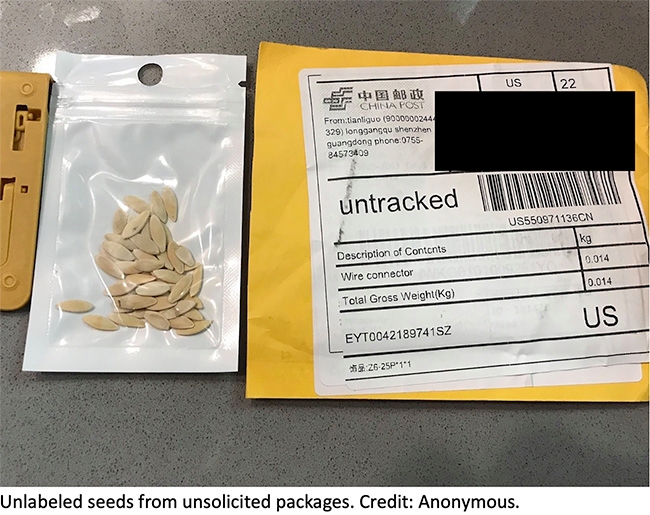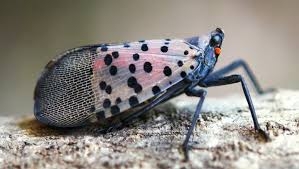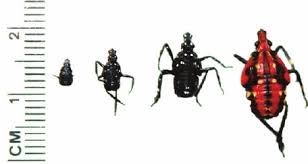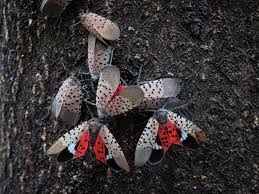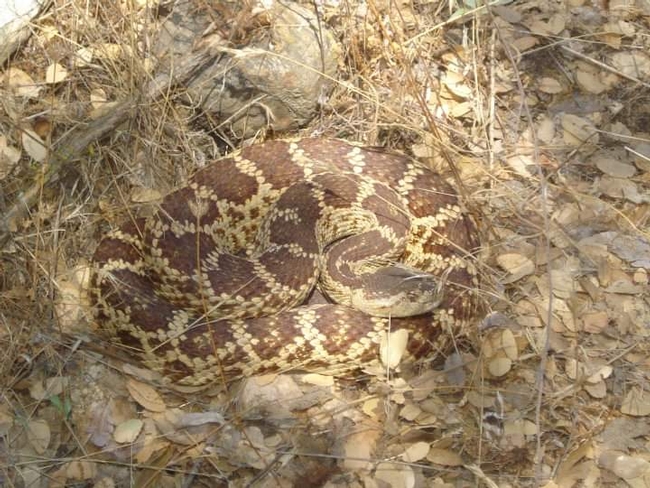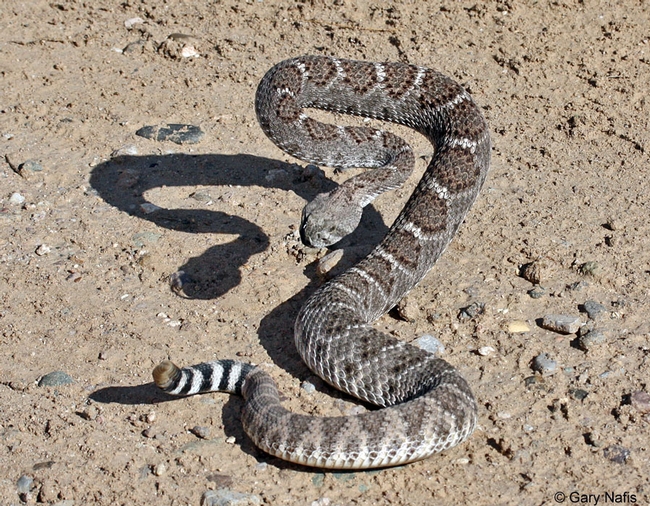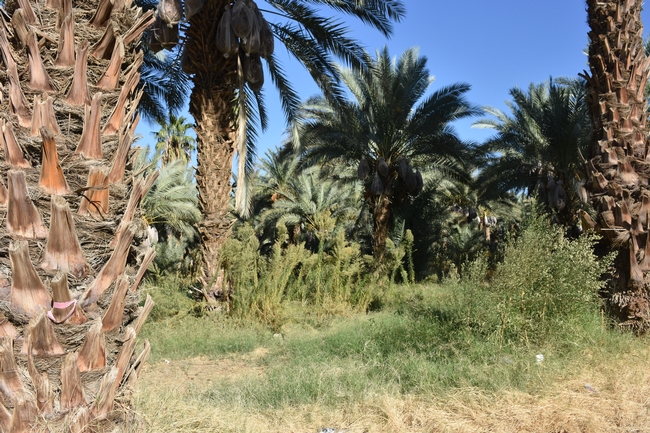
Posts Tagged: pest management
Diagnosing Herbicide Injury- New Online Course
Written By--Petr Kosina, UC Statewide IPM Program A brand-new online course on Diagnosing Herbicide Injury focusing on how an herbicide injury situation can arise, what information can help diagnose symptoms during field...
USDA Investigating Packages of Mysterious Seeds
Have you had unexpected seeds show up in the mail? Unknown seeds could be invasive plants, contain invasive insects, or have plant disease causing agents. Here's what the United States Department of Agriculture Animal Plant and Health Inspection Service (USDA APHIS) has to say about it.
USDA Investigates Packages of Unsolicited Seeds
USDA is aware that people across the country have received suspicious, unsolicited packages of seed that appear to be coming from China. USDA's Animal and Plant Health Inspection Service (APHIS) is working closely with the Department of Homeland Security's Customs and Border Protection, other federal agencies, and State departments of agriculture to investigate the situation.
USDA urges anyone who receives an unsolicited package of seeds to immediately contact their State plant regulatory official or APHIS State plant health director. Please hold onto the seeds and packaging, including the mailing label, until someone from your State department of agriculture or APHIS contacts you with further instructions. Do not plant seeds from unknown origins.
At this time, [USDA does not] have any evidence indicating this is something other than a “brushing scam” where people receive unsolicited items from a seller who then posts false customer reviews to boost sales. USDA is currently collecting seed packages from recipients and will test their contents and determine if they contain anything that could be of concern to U.S. agriculture or the environment.
USDA is committed to preventing the unlawful entry of prohibited seeds and protecting U.S. agriculture from invasive pests and noxious weeds. Visit the APHIS' website to learn more about USDA's efforts to stop agricultural smuggling and promote trade compliance.
Free Workshops for Youth, Professionals and Community Members. Plus: Fire and Plant Disease Resources for Homeowners
Learn About California Agriculture
Join us on Thursday, May 21st, 9:30 am PST, for Part 2 of a webinar series on California agriculture, where we'll learn about major crops and production areas. This webinar will feature UCCE Ventura County advisors Andre Biscaro and Ben Faber. Watch it live or view after on YouTube. Part 1 is up. This is an ideal webinar series for the home classroom.

Fumigants and Non-Fumigant Alternatives: Regulatory & Research Updates
Growers, PCAs, applicators and supervisors of fumigant and non-fumigant technologies and decision makers should plan to attend this free, virtual educational outreach event, scheduled for Monday May 29th from 8:00 a.m. to 12:00 p.m. This workshop is open to the public. Although targeted to strawberries, most of the learning will generally apply to other crops. The program is being hosted by Dr. Oleg Daugovish, who serves as the Strawberry and Vegetable Crop Advisor for UCCE Ventura County.
Topics include:
- Most pertinent regulatory requirements for fumigant use and application
- Industry updates on fumigant and non-fumigant tools use
- Fumigant application based on need within fields
- Soil-borne pathogen management
Continuing Education Units are available: 1.5 hours of "Other" and 1.0 hours of laws and regulations have been applied for from California Department of Pesticide Regulation (DPR).
Registration is required and participants will receive a link and instructions prior to the workshop. Register here.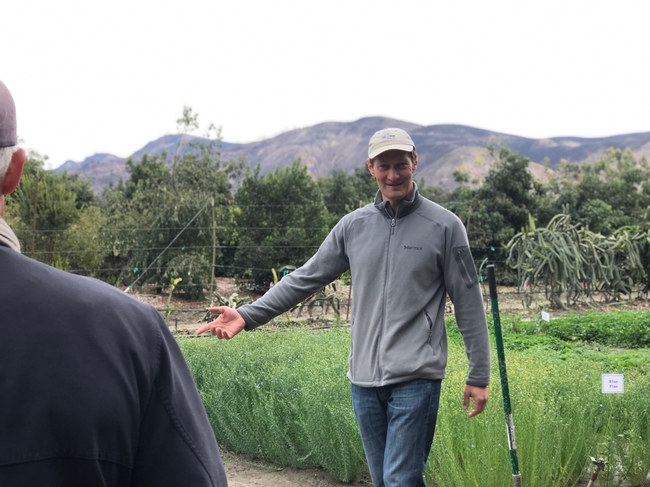
Announcing Treemendous Learning Webinars for Middle and High School Students
Join us on alternate Tuesdays in May and June, 3:00 pm to 4:00 pm, for this opportunity designed for middle and high school students. Treemendous Tuesdays is a collaboration of U.S. Forest Service, Los Angeles Center for Urban Natural Resources, California Project Learning Tree, California 4-H, and UC Agriculture & Natural Resources
Five webinars will be hosted every other week starting May 5 and ending June 30. These events are free and registration is required.
- May 5: Invasive Species (invasive shot hole borers)
- May 19: Invasive Plants & Trees
- June 2: Benefits of the Urban Forest
- June 16: iTree
- June 30: Living with Fire
Register at https://ucanr.edu/survey/survey.cfm?surveynumber=29846
New Resource to Diagnose and Manage Plant Disease
UC's Integrated Pest Management Program has a new Pest Notes publication available, which provides information to help diagnose and manage Anthracnose, fungal diseases that can impact many deciduous and evergreen trees and shrubs. These diseases can also infect vegetables, flowers, fruit and turfgrass in some regions in California. Dr. Jim Downer, an Advisor in our UCCE Ventura County office, is a co-author.
Preparing for Fire Season
UC ANR has organized an electronic portal - Homeowner's Wildfire Mitigation Guide - that contains a wealth of resources to help homewoners prepare for fire season. Please visit our Fire Resources and Information page for the latest research and information.
Follow Us on Facebook and Instagram
We'd love to interact with you on social media. Like our Facebook page and visit us on Instagram.
Potential Invasive Pest Threaten California Avocados: Spotted Lantern Fly
Avocado growers have one more thing to worry about, just recently things have settled with the polyphagous shot hole borer and have recently had a wakeup call about the Redbay ambrosia beetle(Xyleborus glabratus)that carries the deadly fungus, Laurel wilt (Raffaelea lauricola). Now we have the invasive Spotted lantern fly (SLF)(Lycorma delicatula), to worry about. Originally from China, has spread to Korea and Japan, and has been found most recently in the United States in Pennsylvania in September 2014. The insect has now been found in New Jersey, Virginia and Delaware. These insects are pests of many agricultural crops including almonds, apples, blueberries, cherries, peaches, grapes and hops as well as hardwoods such as oak, walnut and our tasty avocados amongst other specialty crops. There is the potential for far reaching economic damage if the SLF becomes widely established in the United States and experts believe the lantern fly is likely to make its way to California soon. In 2019, California Department of Food and Agriculture (CDFA) inspectors have reported to date finding a total of 11 dead spotted lanternflies this year on cargo planes arriving at California airports in Sacramento, Stockton and Ontario when originally looking for Japanese beetles. The dead SLF specimens found on the cargo planes at California airports this summer and early fall were all adults. It is believed that they flew into the planes during loading activities at the airport in Allentown, PA and later died en route. The airport has since been treated to reduce and control SLF populations at the facility.
Biology
The name lanternfly can be misinforming; SLF have little in common with any type of fly. When looking at the adults with wings spread and can also make them look like moths. They are actually planthoppers in the order Hemiptera, or true bugs, and are closely related to brown marmorated stink bugs, aphids and leafhoppers. All insects in this order have piercing-sucking mouthparts which allow them to drill into the phloem of a plant to feed directly on the sweet sap and weaken the plant. From what is known in the current Pennsylvania infestations, SLF has shown to have one generation per year consisting of four nymphal stages, an adult stage, and overwintering as egg masses. Being true bugs, spotted lanternflies molt to progress between stages. Egg hatch is over an extended time period with the first instar nymphs appearing in May and June. Mating takes place starting in late August with egg-laying taking place in September through November or until the first killing freeze. It is unknown how exactly the life cycle would be in California, as the pests hasn't yet been found in California.
The first instar nymph is approximately ¼” long and black with white spots, and occasionally mistaken for a tick. Second and third instar nymphs are also black with white spots, but the fourth instar nymph takes on a red coloration with white spots and can be up to ¾”. Fourth instar nymphs molt and become adults approximately 1 inch in length. The adult SLF is about 2.5 cm (1 inch) in length. The fore wings are greyish-brown with black spots, with the wing tips having a darker, brick-and-mortar pattern. The hind wings are mainly red with black spots, followed by a white band and a black tip. When the spotted lanternfly is at rest, a hint of the red color can be observed through the forewings, but the color is especially noticeable when it is in flight. The body is mainly black, but the abdomen appears to be mostly yellow with black bands going down its length.
Signs and Symptoms
Spotted lanternfly causes damage to plants in two different ways. The nymphs and adults feed on plants using their piercing mouthparts to suck fluids from the stems or leaves. This has been shown to cause stunted growth, localized damage, reduced yields, and, in extreme cases, even death of the plant. Additionally, as the spotted lanternfly feeds, it excretes a sugary substance called honeydew. This honeydew, in addition to being attractive to ants, wasps, and other insects, is readily colonized by sooty mold, which can cause parts of the plants to become blackened, reducing photosynthesis and affecting the quality of the plants.
Source of threat
Spotted lanternflies have been documented to feed on over 70 species of trees and plants.Beware, the. SLF is a hitchhiker and are not shy.On their own, they are able to move 3 to 4 miles through walking, jumping and flying. However, can be spread long distances by people who move infested material or items containing egg masses. Egg masses, juveniles, and adults can be on trees and plants and are also found on bricks, stone, metal, and other smooth surfaces. SLF can also hitch a ride via vehicles, trailers, and even one's clothes.
What is currently being done
The CDFA recently granted Mark Hoddle from University of California, Riverside funds to test whether a tiny parasitic wasp, also originally from China, could be the solution to the forthcoming problem. The wasp has a needle-like appendage it uses to lay its own eggs inside the lantern fly's eggs. While developing, the wasp larvae eat and kill their hosts, and then emerge after chewing escape holes through the lantern fly eggs.
What you can do
Growers, you can inspect your trees and plants for signs of this pest, particularly at dusk and at night when the insects tend to gather in large groups on the trunks or stems of plants. Inspect trees (in particular, tree of heaven, an invasive tree itself) bricks, stone, and other smooth surfaces for egg masses which are usually very camouflaged. The female SLF covers her eggs with a creamy-white, putty-like substance that becomes pinkish-gray as it dries. After a few weeks the covering turns a darker tan and starts to crack, resembling a splotch of mud.Many photos of adult SLF show wings open, including the red underwings, but in nature this only occurs when the SLF is startled or is ready to take flight. It is much more common to see adults at rest with black-spotted, pinkish-tan wings folded over its back. Both male and female SLF have yellow abdomens with black stripes. Female SLF have a set of red valvifers at the distal end of the abdomen. When gravid (mated), the female abdomen swells to the point where they find it difficult to fly.
Work Cited
Barringer, L. E., Donovall, L. R., Spichiger, S. E., Lynch, D., & Henry, D. (2015). The first new world record of Lycorma delicatula (Insecta: Hemiptera: Fulgoridae). Entomological news, 125(1), 20-24.
Dara, S. K., Barringer, L., & Arthurs, S. P. (2015). Lycorma delicatula (Hemiptera: Fulgoridae): a new invasive pest in the United States. Journal of Integrated Pest Management, 6(1), 20.
Hoddle, M. (2019). Spotted Lanternfly is coming - California is getting ready, now!. California Pest Control Advisor Magazine, Aug. 2019. Vol. XXII (4),38-41.
Urban, J. M. (2019). Perspective: shedding light on spotted lanternfly impacts in the USA. Pest management science.
Rattlesnakes in California Orchards: Growers Beware
First, remember that the desire to avoid any kind of an interaction is mutual. Rattlesnakes are an important part of the ecosystem, feeding on rodents, birds, and other small animals.Snake season in Southern California runs from April through October, but the warmer the weather, the more the reptiles are likely to be out and about. Rattlesnakes are California's only native venomous snake, with some adults reaching up to 6 feet long. According to the California Poison Control Center notes, rattlesnakes account for more than 800 bites each year, with one to two deaths. About 25 percent of the bites are "dry," meaning no venom was injected, but the bites still require medical treatment.There are nine species live in various areas of the state and their size can vary.
According to the University of California Integrated Pest Management Guidelines(2014),the most widespread rattlesnake in California is the western rattlesnake (Crotalus oreganus), found from the northern part of the state as far south as Santa Barbara County and from sea level to 7,000 feet. Two closely related species (C. helleri and C. lutosus) are found in coastal Southern California and in the northern Sierra Nevada, respectively. The sidewinder (C. cerastes) is the smallest rattlesnake and is so named because of its peculiar method of sideways locomotion. The sidewinder is sometimes called the horned rattler because of the hornlike scales above its eyes. It is most commonly found in sandy desert areas from below sea level to 6,000 feet. The Mohave rattlesnake (C. scutulatus) ranges across the desert and foothills of southeastern California from sea level to higher elevations. The southwestern speckled rattlesnake (C. mitchellii) ranges from Baja California northward across much of the Colorado, Mojave, and Sonoran Deserts, overlapping with the red diamond rattlesnake (C. ruber) in western parts of its range and the sidewinder farther east. The Panamint rattlesnake (C. stephensi) is closely related but has a more northerly distribution in the inland desert regions of Southern California. The red diamond rattlesnake is found in Baja California and in southwestern California south of Los Angeles. The western diamond-backed rattlesnake (C. atrox) is seldom seen in California but occurs in the extreme southeastern part of the state in desert regions.
Of the nine species of rattlesnakes in this region, the Western Diamondback rattlesnake is probably the most dangerous because of its size and aggressive nature. State experts say the Diamondback can be found primarily in Imperial, Riverside and San Bernardino counties. Most trees crops that are found in this county that are at risk for hosting these snakes are avocados, citrus and dates.
This vertebrate pest can cause a threat to workers conducting routine agriculture cultural practices such as irrigating, fertilizing, and harvesting. In the deserts of Riverside and Imperial county where the laborious date palms are grown, rattle snakes can cause a threat to harvesters if orchard vegetation is left uncontrolled. The snakes are also attracted to water, so irrigators can run the risk of coming into contact with the snakes.
Biology and Behavior
Rattlesnakes are thick-bodied snakes with keeled (ridged) scales in a variety of colors and patterns. The National Wildlife Federation reported that rattlesnakes typically live for 10 to 25 years.
Most species are patterned with dark diamonds, rhombuses or hexagons on a lighter background. Rattlesnakes are ovoviviparous, which means that eggs incubate inside the mother's body. Babies are born live, encased in a thin membrane that they puncture after being born.
They are among the group of snakes called pit vipers because of the small pits on each side of the head between the eye and nostril. These pits are temperature-sensitive structures that assist the snake in finding prey, even in complete darkness. The tongue is also used to detect the scent of prey. Rattlesnakes have a specialized venom delivery system. Venom is produced in glands behind the eyes and then flows through ducts to the hollow fangs. Normally the fangs fold back against the roof of the mouth and when a snake strikes, the fangs pivot forward to inject venom.(Kardong and Bels, 1998).
The California Department of Fish and Wildlife recommends being alert and also having a sense of where a rattlesnake could be at a particular time of day. After a cold night, the snakes will try to raise their body temperatures by laying out in the sun around mid-morning. To prevent overheating during the day, they may be more active at dusk, dawn and nighttime hours.Though they are not nocturnal, in the hot summer months they may be more active at night.
Management
The nine species of rattlesnakes found in California are not considered endangered or threatened. California Department of Fish and Wildlife Code classifies rattlesnakes as native reptiles. California residents can take most rattlesnake species on private lands in any legal manner without a license or permit, although a bag limit of two still applies. Additionally, the red diamond rattlesnake (C. ruber) is prohibited from being taken or killed by state wildlife regulation.
Habitat Modification
Most rattlesnakes seek cover in crevices of rocks, under surface objects, beneath dense vegetation and in rodent burrows, so eliminating potential shelter is critical. Adults eat live prey, primarily rodents; the young consume mostly lizards and young rodent.Controlling the vermin population in your orchard ia an important factor as the rodent borrows can become a snake's new homes. Weed management in orchards are critical during the warmer months. The vegetation can be a habitat for snakes.In addition,pruning or removing old trees from the orchard, proper disposal of the wood is important. Stacking or saving the wood in piles create a habitat for the rattlesnakes.
Exclusion
Structures for farming operations can vary in size and age. Chemical sheds, equipment garages, machinery shops are infamous to hosting snakes. In summer, rattlesnakes may be attracted to cool and/or damp places, such as beneath buildings. Sealing all cracks and other openings greater than 1/4inch can prevent them from entering. Gaps beneath doors are often large enough to permit snakes to enter, especially young ones.
Benefits
According to the University of California Integrated Pest Management Guidelines(2014),rattlesnakes add to the diversity of our wildlife and are important members of our ecosystem. They can reduce the number of disease carrying rodents and other pest species. In general, they should be left alone, whenever possible, especially in wildland areas. Nonvenomous snakes, such as gardener snakes should also be left alone wherever found.
References
California Department of fish and Wildlife. https://www.wildlife.ca.gov/Keep-Me-Wild/Rattlesnakes. Accessed 20 June 2019.
California Poison Control. https://calpoison.org/topics/rattlesnakes. Accessed 20 June 2019.
Kardong, K. V. and Bels, V. L. 1998. Rattlesnake strike behavior: kinematics. Journal of Experimental Biology, 201(6), 837-850.
National Wildlife Federation. https://www.nwf.org/Educational-Resources/Wildlife-Guide/Reptiles/Rattlesnakes. Accessed 20 June 2019.
Salmon, T. P., D. A. Whisson, and R. E. Marsh. 2006. Wildlife Pest Control Around Gardens and Homes. 2nd ed. Oakland: Univ. Calif. Agric. Nat. Res. Publ. 21385.
Todd, B., T.P. Salmon, D.A. Whisson and R.E. Marsh.University of California Integrated Pest Management Guidelines http://ipm.ucanr.edu/PMG/PESTNOTES/pn74119.html. Accessed 20 June 2019.
Walter, F. G., U. Stolz, F. Shirazi, J. McNally. 2009. Epidemiology of severe and fatal rattlesnake bites. Philadelphia: American Association of Poison Control Centers' Annual Reports. Clin. Toxicol. 47:663-669.

